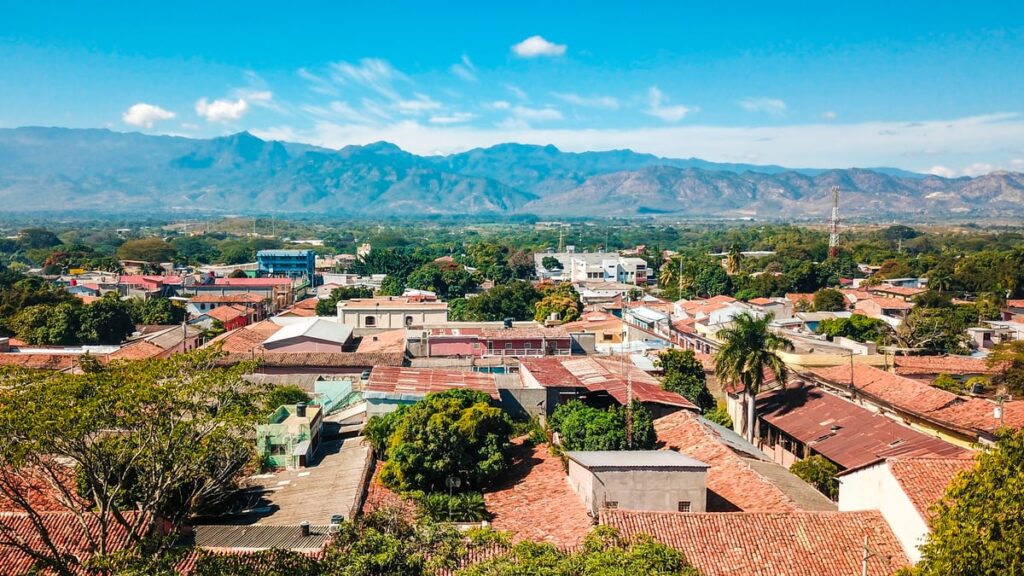The lempira (HNL) is the official currency of Honduras, the Central American country known for its coffee, natural beauty, and cultural diversity, from the Mayan ruins of Copán to the Garífuna peoples of the Caribbean coast.

Honduran lempiras are issued by the Central Bank of Honduras and are divided into 100 cents (centavos), much like the U.S. dollar.
The symbol for a Lempira is L. In total, there are eight bill denominations, with each banknote a different color. Coins are worth one, two, five, ten, twenty, or fifty cents each.
Learn more about Honduran lempira rates, facts, and tips in this guide—whether you send money to Central America or plan to visit soon.
1. The lempira is named for a 16th-century leader.
Wondering how the name “lempira” came to be? The Honduran currency is named for the 16th-century cacique Lempira, who was a ruler of the indigenous Lenca people. He’s a national hero for leading the resistance against the Spanish conquistadors. The name “lempira” translates to “lord of the mountains” in the Lenca language.
Modern-day Lenca communities in Honduras and El Salvador retain a strong sense of their cultural identity.
2. Denominations are color-coded.
Whether shopping in San Pedro Sula or paying for bus fare in Tegucigalpa, you’ll notice that lempira bills are easy to distinguish from another. That’s thanks to their color-coding system, designed to help locals and travelers alike quickly tell the bills apart. The colors are as follows:
- L1: Red (one lempira)
- L2: Purple (two lempiras)
- L5: Dark gray (five lempiras)
- L10: Brown (10 lempiras)
- L20: Green (20 lempiras)
- L50: Blue (50 lempiras)
- L100: Yellow (100 lempiras)
- L500: Magenta (500 lempiras)
You may be wondering, if the notes are color-coded, how are the coins differentiated? Similar to U.S. coins, the coins in Honduras are different sizes and sport varying designs. There are six different coin values in all.

3. Lempiras replaced the peso.
Interestingly, the lempira is a relatively modern currency. It was only introduced about 90 years ago, in 1931. Prior to that, Honduras used the peso.
Pesos continue to be used in several countries, including the Philippines and much of the Americas. The peso originated in Spain; the word “peso” translates to “weight” and refers to its origins as a silver currency.
4. The value has changed drastically over time.
Like most currencies, the value of the lempira is free-floating based on the value of other currencies around the world.
In the year 1980, two lempiras were equivalent to one U.S. dollar. At the time of writing, a U.S. dollar is equal to about 24 lempiras. Many factors impact currency exchange rates.
Some of the biggest reasons for the declining lempira value are inflation rates, interest rates, government debt, demand for foreign currency, and Honduras’ volatile economy.
5. Lempiras or dollars? It depends where you are.
Lempiras are the only official currency in Honduras, and are favored by smaller businesses. Market sellers and others prefer to bargain in lempiras.
That said, travelers can spend U.S. dollars in larger cities and especially in the touristed Bay Islands. In fact, many hotels on Roatan and Utila, which are popular scuba diving destinations, list prices in dollars as well as lempiras. If the Bay Islands are your only destination in Honduras, you may not need to exchange any money prior to your arrival, as most businesses there accept dollars (though your change may be in lempiras).

Understanding Honduran lempira exchange rates
Whether you’re visiting Honduras or planning to send money to loved ones there, it’s important that you understand the exchange rate. This rate represents how many lempiras you’ll get for each dollar, pound, or unit of your own currency.
At the time of publication, the exchange rate between $1 USD and 1 Honduran lempira is 1/24.10. That means $1 USD will get you about 24 lempiras. It’s important to note that this rate changes frequently based on the factors mentioned above, such as inflation and interest rates. You can always check on current exchange rates with a quick Google search.
Before sending money to Honduras, or exchanging your dollars, pounds, or euros for lempiras, do your research. Keep in mind that airport exchange counters will typically give less favorable rates than ATMs or money transfer apps.
Sending money to Honduras
The exchange rate isn’t the only number that matters when you’re sending money to Honduras. In fact, you’ll often save the most money on your transfer by looking at fees.
Banks and traditional wire transfers are often a more expensive option. If you want to cut back on fees, your best bet is to use a money transfer app like Remitly. With Remitly, all you have to do is set up your account and complete a one-time verification process to start sending money internationally.
